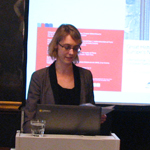Euroacademia Conferences
 Europe Inside-Out: Europe and Europeanness Exposed to Plural Observers (9th Edition) April 24 - 25, 2020
Europe Inside-Out: Europe and Europeanness Exposed to Plural Observers (9th Edition) April 24 - 25, 2020 Identities and Identifications: Politicized Uses of Collective Identities (9th Edition) June 12 - 13, 2020
Identities and Identifications: Politicized Uses of Collective Identities (9th Edition) June 12 - 13, 2020 8th Forum of Critical Studies: Asking Big Questions Again January 24 - 25, 2020
8th Forum of Critical Studies: Asking Big Questions Again January 24 - 25, 2020 Re-Inventing Eastern Europe (7th Edition) December 13 - 14, 2019
Re-Inventing Eastern Europe (7th Edition) December 13 - 14, 2019 The European Union and the Politicization of Europe (8th Edition) October 25 - 26, 2019
The European Union and the Politicization of Europe (8th Edition) October 25 - 26, 2019 Identities and Identifications: Politicized Uses of Collective Identities (8th Edition) June 28 - 29, 2019
Identities and Identifications: Politicized Uses of Collective Identities (8th Edition) June 28 - 29, 2019 The European Union and the Politicization of Europe (7th Edition) January 25 - 26, 2019
The European Union and the Politicization of Europe (7th Edition) January 25 - 26, 2019 7th Forum of Critical Studies: Asking Big Questions Again November 23 - 24, 2018
7th Forum of Critical Studies: Asking Big Questions Again November 23 - 24, 2018 Europe Inside-Out: Europe and Europeanness Exposed to Plural Observers (8th Edition) September 28 - 30, 2018
Europe Inside-Out: Europe and Europeanness Exposed to Plural Observers (8th Edition) September 28 - 30, 2018 Identities and Identifications: Politicized Uses of Collective Identities (7th Edition) June 14 - 15, 2018
Identities and Identifications: Politicized Uses of Collective Identities (7th Edition) June 14 - 15, 2018
Napoleon’s Europe through the Lens of Art History – a survey of temporary exhibitions (1990-2011)
-
-

-
Presentation speakers
- Felicity Bodenstein , Université de Paris IV-Sorbonne
- Download presentation
Abstract:
As an essential figure of European history, Napoleon has been the subject in the last two decades of a wave of major historical exhibits organized by national museums across Europe in the context of the bi-centennial celebrations/commemorations of the major battles of the Napoleonic wars.
The visual force of Napoleon’s place in European museums is largely the result of the way in which he orchestrated the diffusion of his own image – and his careful efforts to style his place in history through imagery – famously establishing himself as the successor of a prestigious genealogy of rulers that included Charlemagne. To this end he developed a cultural policy that supported a vast production of propagandistic history paintings and the development of an international artistic style that has since been considered in direct relation with his person and his Empire. The character of artistic production during Napoleonic era was recently defined in the 2010 exhibition Staging Power that took place in the Nationalmuseum in Stockholm. As stated in the introduction to this exhibit that compared Napoleon with Sweden’s Charles John and Russia’s Alexander I : “Art and power are like magnetic fields. They can attract each other, to form an inseparable whole, but they can also repel one another. At certain junctures in history, they have fused together with such force that entire societies have been remoulded.”
Organized in cooperation with the St. Petersburg’s State Ermitage museum, its director clearly outlines its political significance in the preface of Staging Power “Two countries that for many years regarded each other as enemies have freed themselves from their firmly rooted stereotypes by seeking their shared history” . He goes on to underline that: “Our starting point is the role of art in these dramatic historical events, which finds concrete expression in the objects on display”, thus “the history narrated in this exhibition is fascinating, dramatic and beautiful.” The discourse of art history during Napoleonic Empire as expressed today in these exhibitions constitutes an excellent subject for a transnational study of the construction of a shared narrative of European history through the ambiguous role of art in political and diplomatic contexts. -
Related Presentations


















